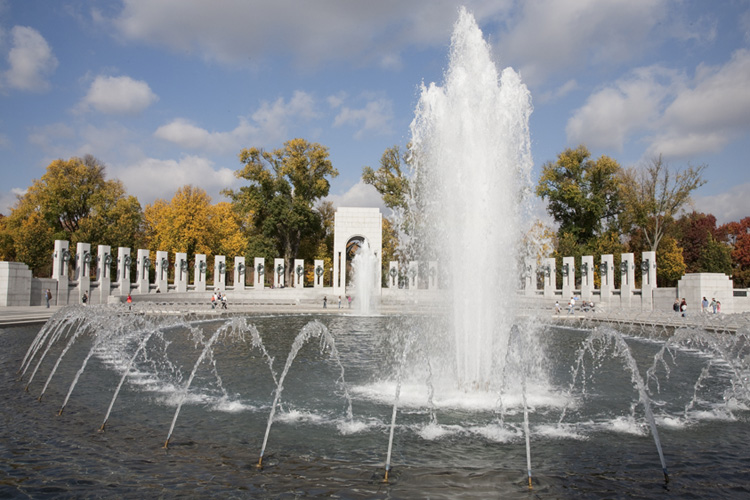 Use of Art Therapy in the Treatment of Veterans
Use of Art Therapy in the Treatment of Veterans
This article was originally published by American Art Therapy Association April., 2010
About Art Therapy
Art therapy can be beneficial to people of all ages, including adults who have emotional, cognitive, and /or physical disabilities. Our nation’s Veterans often return home with acute psychological or medical conditions that impair functioning, family relationships, and reentry into the workforce. Others may develop chronic disorders that require months or even years of counseling or rehabilitation. For Veterans who are receiving psychiatric care, art therapy can be an effective form of treatment, either as an adjunct to other therapies or as a form of individual or group psychotherapy. Former Senator Bob Graham (FL) emphasized value of art therapy with US Veterans in The Congressional Record, stating: “Art therapists provide effective treatment and health maintenance intervention for Veterans, focusing on all of their life challenges, such as mental, physical, and cognitive impairments. Intense emotion and memory, often difficult to convey in words, often are more easily expressed in images with the guidance of a trained clinician…Given the number of Veterans gradually returning from the current war in Iraq, art therapy has the potential to assist them as a form of rehabilitation.” Members of the American Art Therapy Association hope that the following information will give you a greater understanding of how art therapy can be used in the treatment of our nation’s Veterans and has unique value in enhancing and improving mental health.
How Art Therapy Helps Veterans
Art therapy helps Veterans in a variety of ways, including: For Veterans with mental health needs, art therapy provides emotional relief by encouraging expression of feelings and concerns. Art making has been observed to relieve depression and anxiety as well as to improve orientation to reality. Many patients have increased levels of self-confidence and self-esteem through engaging in creative activities.
For Veterans seeking treatment for substance abuse, specific art techniques can help patients understand the need for treatment, accept their powerlessness over addictive substances, and make a personal commitment to their sobriety. Art therapy is used to supplement traditional twelve step programs and helps Veterans with substance abuse problems to achieve personal insights, identify strengths and deficits, and experience a sense of spirituality through self-reflection. In assisted care and hospices, art therapy adds to the overall quality of life of our nation’s Veterans. In these settings, art therapists capitalize on the strengths, courage, and pride of military personnel, helping them to create visual records of their histories, memories, and legacies. Art therapy techniques in these facilities often involve creating visual autobiographies, writing life stories, and illustrating memoirs, in addition to art experiences to sustain cognitive skills and enhance stress reduction. For Veterans undergoing physical rehabilitation, creating artwork can help promote fine motor skills. Art therapists may recommend specific interventions to help Veterans reconcile physical changes and injuries, design art making experiences that reinforce physical skills, and develop programs to help them discover new strengths. Currently, art therapists and researchers are studying the value of art therapy in treating posttraumatic stress disorder (PTSD), a problem experienced by many combat Veterans returning from the recent conflicts in the Middle East and military from previous wars. For returning military suffering from PTSD, art therapy is used to help reduce debilitating symptoms, provide opportunities for expression of painful memories, and enhance stress reduction through art-based relaxation techniques and behavioral skills. Art Therapy in Veterans Hospitals. Art therapy has been a valuable component of services offered by Veteran’s Hospitals (VA) since 1945 when the Winter VA Hospital in Topeka, KS first offered art therapy as part of their psychiatric services to returning World War II veterans. By 1980, a job series was established to facilitate the hiring of arts therapists nationwide—the GS638 series for Creative Arts Therapists and Recreation Therapists. Today, art therapists are employed in VA hospitals or offer therapeutic services to military personnel and their families in hospitals such as Walter Reed in Washington, DC, clinics, mental health programs, or private practice. Depending on their credentials, many art therapists provide services to military personnel through TRICARE, managed health care and resources for active, reserves, and retired service members.
How Does Art Therapy Compare with Other Therapies?
Art therapists are Master’s level professionals who have a degree in art therapy or a related field. They generally hold a credential in the field of art therapy such as Registration (ATR) or Board Certification (ATR-BC). Many art therapists also hold an additional license in counseling, psychology, or marriage and family therapy. Art therapists are skilled in using a variety of art modalities (drawing, painting, sculpture, and other media) in assessment and treatment and the clinical application of methods of psychotherapy and counseling to achieve goals and objectives. Like other forms of psychotherapy or counseling, art therapists may use a specific approach or theory. For example, an art therapist working with a Veteran with PTSD may combine drawing and collage activities with cognitive-behavioral therapy to help the individual reduce symptoms and reframe negative thinking. Or, a practitioner may use a humanistic approach such as person centered counseling to enhance a Veteran’s personal strengths and sense of self-worth through the creative process. As a form of rehabilitation, art therapy promotes social skills and cognitive and physical functioning. In VA hospitals, art therapists may work in activity therapy departments to help Veterans make drawings, paintings, and sculptures for personal satisfaction or artwork to share with the public through shows like the National Veterans Creative Arts Festival. These unique aspects of art therapy help Veterans find value and meaning in their creative expressions, engage in purposeful activities, and improve the overall quality of their lives. Art therapists use a wide variety of art-based techniques in the assessment and treatment of adults. For military returning from combat or veterans of previous wars and conflicts, art therapy provides an outlet for expression of feelings and experiences that are difficult to express verbally. As a form of psychotherapy, art therapy can help veterans communicate traumatic memories, relieve stress, and reduce symptoms of trauma related disorders. Art therapists encourage their patients to reflect on the meaning of their artwork to assist their psychological recovery insight, and functioning. For those veterans in extended care facilities or hospitals, art therapy helps to enhance the quality of life by providing a meaningful creative vocation to improve self-esteem and increase personal self-worth. Based on their knowledge of art materials, human development, and physical, mental and emotional disorders, art therapists choose specific drawing, painting, or sculpting activities to augment cognitive, psychological, and physical rehabilitation. The American Art Therapy Association is dedicated to initiating art therapy programs that will help our newly returned combat military and our nation’s Veterans recover emotionally, cognitively, and physically. In particular, the Association is committed to the development of outcome research that will ameliorate the effects of posttraumatic stress disorder (PTSD) and other mental health problems Veteran’s experience as a result of active combat. Our national initiative is to provide military with access to art therapy services in Veterans Administration Hospitals as well as clinics, medical centers, and other facilities where Veterans receive treatment. For a PDF version of this Newsletter, Click Here Photos for Healing Newsletter #107- Nov. ’15


